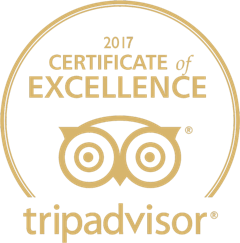How to rank higher on Google: 11 Effective Strategies for 2025
Your next step is to search for those keywords in Google and examine the search intent closely. The search intent is what users expect to see for the particular keyword. And the pages ranking in the top 5 positions can give you a very good idea. When other websites link to yours, it’s like they’re telling Google, “Hey, this site is good! The more good backlinks you have, the more Google trusts your site. Doing this can boost your site’s search results, making it more visible to people looking for what you offer.
Choosing the Right Keywords
Imagine having AI at your fingertips, ready to write formulas, clean data, and even create charts and graphics for you. With Bricks, you can transform your data into stunning visuals, like dashboards and reports, all interconnected with your documents and presentations. It’s like having your own personal spreadsheet expert, making your life easier and your work more efficient. It might seem a bit complex at first, but with a little practice, you’ll be ranking like a pro. This technique is particularly useful in scenarios like sports tournaments or sales competitions, where multiple factors determine the overall winner. You can repeat these steps with different formulas to highlight different ranks, such as the bottom rank or top three.
How to Improve SEO: 15 Tactics to Boost Your Rankings & Traffic (That Don’t Require New Content)
You can visit the competitor’s site and take note of how they incorporate keywords and phrases. You can also get a more accurate overview from tools like Semrush. Technical aspects of your website also affect your rank in search engines, which is why menu structure, load speed, the use of code, and overall user experience (UX) are important. Let’s take a closer look at various ranking factors and discuss how you can more effectively use keywords to drive search traffic. Keyword research is the process of finding keywords that you want to rank for in search engines. It’s about understanding what potential customers are searching for and why.
Google considers backlinks to be a reflection of domain and page authority. So backlinks from highly reputable sites (like Forbes or Insider) tell Google that your content is trustworthy. If the quality of your content is similar to competitors’, you may need more backlinks (links from other websites) to set you apart.
With AI-driven search, user experience updates, and evolving ranking factors, businesses and content creators need to adapt their SEO strategies to stay competitive. Ranking higher on Google encompasses a variety of on- and off-page search engine optimization (SEO) tactics. In this article titled ‘how to rank on Google’, we discussed the top 16 techniques that could rank our websites well on search engines. Focusing on these techniques alone will drive more organic traffic to your website and improve your search rankings without risking a Google penalty. When you search for something on Google, the search engine displays a list of relevant web pages. The order in which these pages are displayed is determined by Google’s ranking algorithm, which considers various factors to determine the relevance and quality of each page.
- So you’d have site.com/tools/tool-one, site.com/tools/tool-two, and so on.
- In other words, it automatically loads more results when you reach the bottom.
- Refer to our dedicated tutorial to check your Google rankings.
- Making the purpose and relevance of your page clear to Google and searchers is the job of on-page SEO.
- The most cutting edge knowledge resources for the mobile app industry.
AI content writers can generate articles in minutes, but unedited, this often results in a low-quality article. It will likely have generic content or plagiarized content, all of which can hurt your rankings. Your content should assert to both search engines and visitors that you are a reliable expert on the topics related to your keywords. While meta descriptions don’t have a direct SEO Anomaly impact on rankings, they should work closely with your title tags.
Adresa
Hotel Korsal
Šetalište Frana Kršinića 80
20260 Korčula, Hrvatska-

-

Kontakt
Telefon: +385 20 715 722
E-mail: info@hotel-korsal.com

